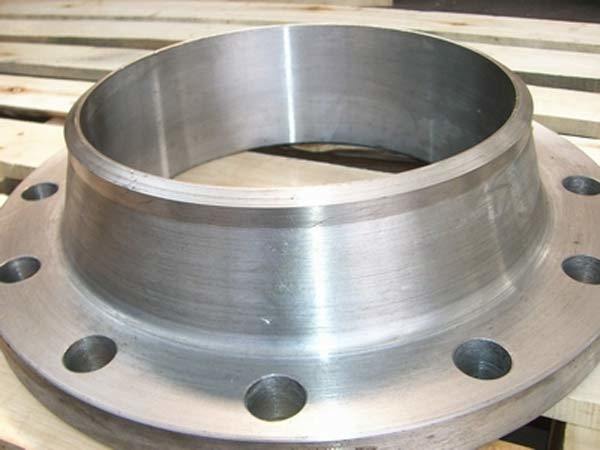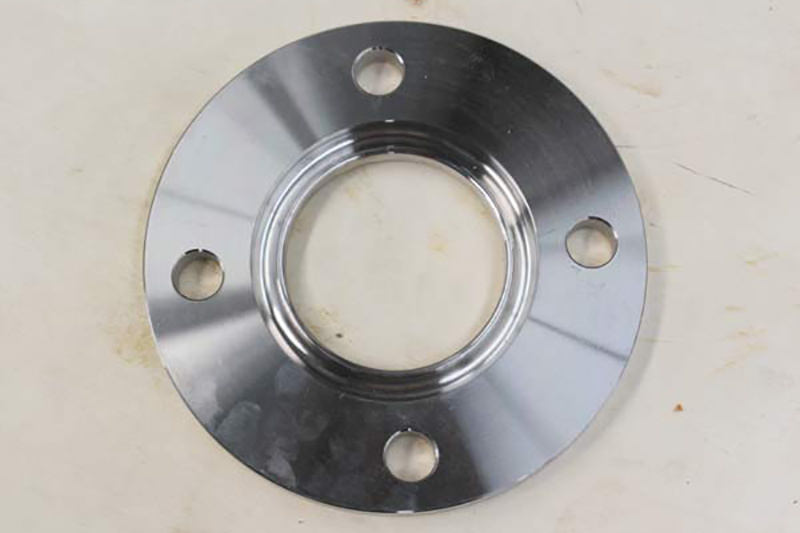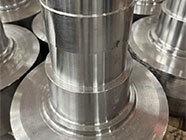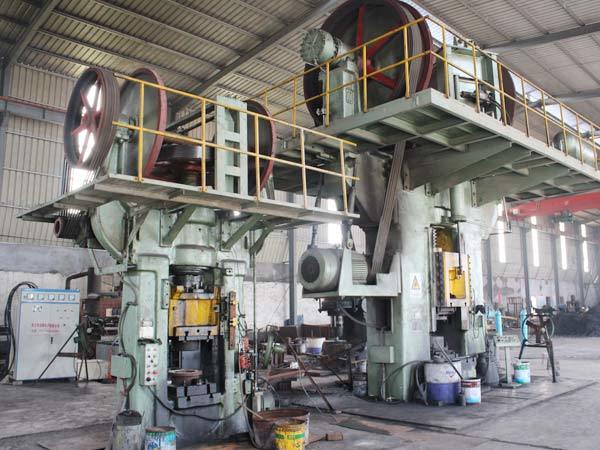Top 5 Advantages of Incorporating Sliding Flanges in Your Designs
Release time:
2025-06-24
Top 5 Advantages of Incorporating Sliding Flanges in Your Designs Introduction to Sliding Flanges In the world of construction and design materials, sliding flanges stand out as a crucial component that facilitates a variety of applications. These unique connections allow for flexibility in piping systems, making them indispensable in many industrial and architectural projects. Understanding the
Top 5 Advantages of Incorporating Sliding Flanges in Your Designs
Introduction to Sliding Flanges
In the world of construction and design materials, sliding flanges stand out as a crucial component that facilitates a variety of applications. These unique connections allow for flexibility in piping systems, making them indispensable in many industrial and architectural projects. Understanding the advantages of sliding flanges can significantly impact your designs, leading to improved functionality and efficiency.
What Are Sliding Flanges?
Sliding flanges, unlike traditional flanges, are designed to slide along the pipe, accommodating movement caused by thermal expansion, vibration, or shifting structures. This ability to adapt makes them particularly useful in scenarios where rigid connections would fail or create stress within the piping system. These flanges are engineered with precision to ensure a reliable connection without compromising the integrity of the system.
The Essential Role of Sliding Flanges in Design
Incorporating sliding flanges into your designs offers numerous advantages, making them a preferred choice among professionals in the construction and industrial sectors. Below, we explore the top five benefits of using sliding flanges in your projects.
1. Enhanced Flexibility
One of the primary advantages of sliding flanges is their enhanced flexibility. Unlike fixed flanges that restrict movement, sliding flanges allow for a certain degree of freedom in piping systems. This flexibility is particularly beneficial in environments subject to temperature fluctuations, where pipes may expand and contract. By using sliding flanges, designers can accommodate these movements, minimizing the risk of leaks and failures.
How Flexibility Affects Long-Term Performance
The ability to adapt to thermal changes and mechanical stresses is vital for maintaining the integrity of piping structures. In sectors such as oil and gas, water treatment, and HVAC, where systems undergo constant strain, sliding flanges provide a robust solution that extends the lifespan of infrastructure.
2. Improved Installation Efficiency
Integrating sliding flanges into your designs can significantly enhance installation efficiency. These flanges are easier to assemble and disassemble compared to traditional fixed flanges, reducing the time and labor required for installation. This ease of use is particularly advantageous in large-scale projects where time is a critical factor.
Streamlining the Installation Process
By simplifying the connection process, sliding flanges allow teams to focus on other critical aspects of the project. Additionally, their compatibility with various piping systems means that they can be used across different applications without the need for extensive modifications, further streamlining the installation process.
3. Reduced Stress on Piping Systems
Sliding flanges help mitigate the stress placed on piping systems caused by thermal expansion and contraction. When a piping system is subjected to temperature changes, traditional fixed flanges can lead to unwanted strain, resulting in cracks or leaks. Sliding flanges, by design, absorb some of this movement, distributing the stress more evenly throughout the system.
The Impact of Reduced Stress on System Longevity
By alleviating pressure on pipes and joints, sliding flanges contribute to the overall health of the piping system. This reduction in stress not only prevents costly repairs but also enhances the longevity of the entire infrastructure, making sliding flanges a wise investment for any project.
4. Versatility in Application
Sliding flanges are incredibly versatile, making them suitable for a wide range of applications. From oil refineries to HVAC systems, these flanges can be utilized in various industries, adapting to different materials and operating conditions. Their design allows them to be effectively used in both high-pressure and low-pressure systems, providing a reliable connection in diverse scenarios.
Tailoring Sliding Flanges for Different Uses
The versatility of sliding flanges ensures that they can be tailored to meet specific project requirements. Different materials, sizes, and pressure ratings can be selected based on the unique demands of each application, making sliding flanges a flexible choice for engineers and designers.
5. Cost-Effectiveness Over Time
While the initial cost of sliding flanges may be comparable to traditional flanges, their long-term benefits make them a cost-effective option. By reducing the likelihood of leaks and failures, sliding flanges help avoid costly repairs and downtime. Additionally, their ease of installation can lead to labor savings, further enhancing their value over time.
Calculating the Long-Term Savings
Investing in sliding flanges means considering not just the upfront costs but also the potential savings from increased system reliability. By preventing leaks, minimizing maintenance needs, and ensuring efficient installation, sliding flanges represent a financially savvy choice for any project manager.
Conclusion
Incorporating sliding flanges in your designs offers numerous advantages, including enhanced flexibility, improved installation efficiency, reduced stress on piping systems, versatility in application, and long-term cost-effectiveness. These benefits make sliding flanges an essential component for engineers and contractors looking to enhance their projects’ reliability and longevity. By understanding and leveraging the advantages of sliding flanges, you can elevate your design standards and achieve greater success in your construction endeavors.
FAQs About Sliding Flanges
What are the differences between sliding flanges and traditional flanges?
Sliding flanges are designed to move along the pipe, accommodating thermal expansion and contraction, while traditional fixed flanges remain stationary, which can lead to stress and potential failure in a piping system.
Are sliding flanges suitable for high-pressure applications?
Yes, sliding flanges can be designed to handle high-pressure applications, making them a versatile option for various industries.
How do sliding flanges improve safety in piping systems?
By reducing stress on the piping system and preventing leaks, sliding flanges enhance the overall safety of the installation, minimizing the risk of accidents or environmental hazards.
Can sliding flanges be used with different types of materials?
Absolutely! Sliding flanges can be manufactured from various materials, including stainless steel, carbon steel, and other alloys, ensuring compatibility with different piping systems.
What maintenance is required for sliding flanges?
Sliding flanges require minimal maintenance, but regular inspections are recommended to ensure that the connections remain secure and are free from corrosion or other forms of wear over time.
By recognizing the myriad benefits of sliding flanges and incorporating them effectively into your designs, you can enhance the performance and reliability of your construction projects, leading to long-lasting, successful outcomes.

Latest developments
Understanding Flanged Connections: Essential Insights for Building and Decorative Materials
Flanged connections are a pivotal aspect of piping systems, specifically designed to join two sections of pipe or a pipe to a valve or fitting. These connections utilize flanges—flat pieces of material with holes for bolts—that create a secure seal between components. A properly executed flanged connection ensures the integrity and efficiency of fluid transport systems, making it an essential topi
Top 5 Advantages of Incorporating Sliding Flanges in Your Designs
Top 5 Advantages of Incorporating Sliding Flanges in Your Designs Introduction to Sliding Flanges In the world of construction and design materials, sliding flanges stand out as a crucial component that facilitates a variety of applications. These unique connections allow for flexibility in piping systems, making them indispensable in many industrial and architectural projects. Understanding the
Understanding High Neck Flanges: Essential Components in Construction and Decoration
High neck flanges, also known as long neck flanges, are specialized connectors used in piping systems. Unlike standard flanges, they feature an extended neck that provides additional height to the flange face. This design is particularly beneficial in applications requiring higher alignment precision and enhanced sealing capabilities. The extended neck allows for better support and alignment of th
The Evolution of Flat Flanges in Building Materials: A Comprehensive Insight
The Evolution of Flat Flanges in Building Materials Introduction to Flat Flanges in the Construction Industry Flat flanges are critical components in various piping and construction applications, serving as flat surfaces for connecting pipes, valves, and other equipment. Their evolution reflects advancements in engineering, material science, and design, contributing to the efficiency and safety of
Understanding Steel Industries Forgings: Key Insights for Professionals
Steel industries forgings play a crucial role in the manufacturing of high-performance components that are integral to various sectors, particularly in construction and decorative materials. Forgings are produced by shaping metal through localized compressive forces, which can be applied through hammers or presses. This manufacturing process not only improves the mechanical properties of the steel
The Role of Forging in Enhancing Stainless Steel Properties: An In-Depth Exploration
The Role of Forging in Enhancing Stainless Steel Properties Table of Contents 1. Introduction to Stainless Steel and Forging 2. Overview of Forging Techniques 3. The Impact of Forging on Stainless Steel Properties 3.1 Enhancing Mechanical Strength 3.2 Improving Corrosion Resistance 3.3 Increasing Ductility and Toughness 4. Types of Forged Stainless Steel 5. Applications of Forged








